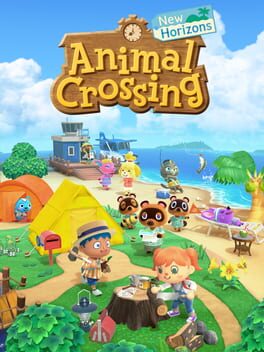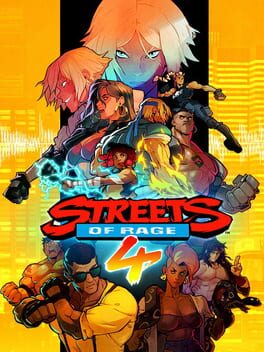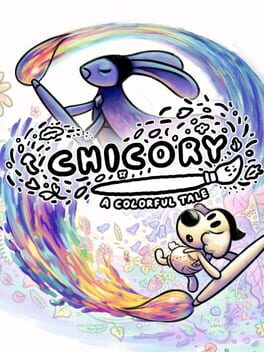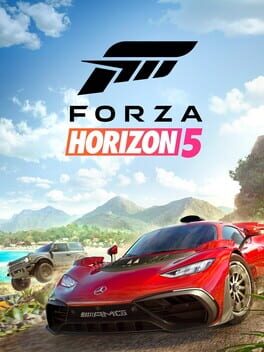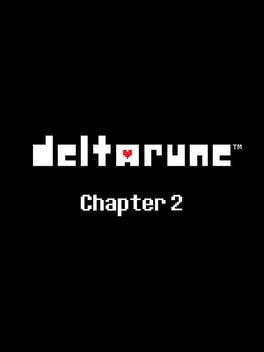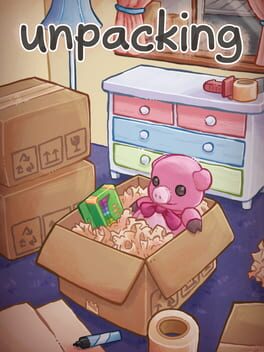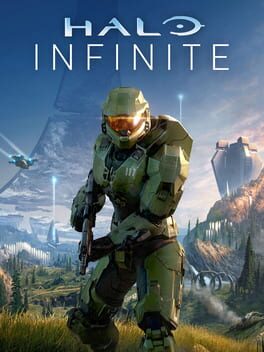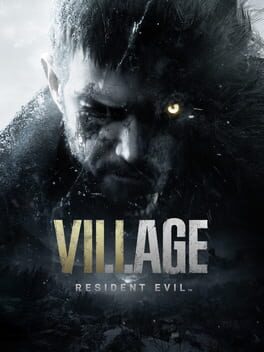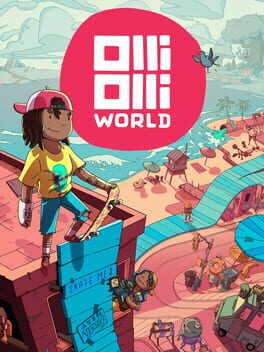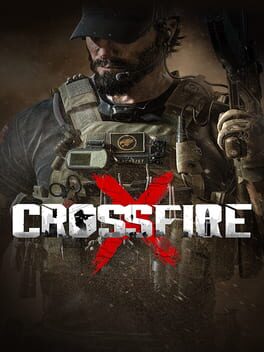Bigg
I love Animal Crossing. And this is more Animal Crossing!
More importantly, the quality of life changes this game made from New Leaf are extremely welcome - you can move around houses! You can actually mail letters and gifts from your airport! You can terraform your island! Setting up sidewalks isn't a nightmare anymore!
Having said that, there's still a few things I miss, like the minigame island, or Roost's cafe, or some of the special villagers like Blanca and Katie. Hopefully that stuff gets added in updates.
More importantly, the quality of life changes this game made from New Leaf are extremely welcome - you can move around houses! You can actually mail letters and gifts from your airport! You can terraform your island! Setting up sidewalks isn't a nightmare anymore!
Having said that, there's still a few things I miss, like the minigame island, or Roost's cafe, or some of the special villagers like Blanca and Katie. Hopefully that stuff gets added in updates.
2020
I went into this fairly blind, having only played very little of the Genesis SoR games, but hey - this is pretty dang fun!
Beat-em-ups have a reputation of being shallow and boring, but this game gets around that by having a combo-heavy combat system that encourages finding a rhythm, not unlike a character action game. And the the characters are extremely varied, ranging from pure rushdown (Cherry) to being more methodical (Floyd).
The difficulty can get a bit uneven, and it loses a little steam near the end, but overall definitely recommended.
Shit, now I wanna play Guardian Heroes again.
Beat-em-ups have a reputation of being shallow and boring, but this game gets around that by having a combo-heavy combat system that encourages finding a rhythm, not unlike a character action game. And the the characters are extremely varied, ranging from pure rushdown (Cherry) to being more methodical (Floyd).
The difficulty can get a bit uneven, and it loses a little steam near the end, but overall definitely recommended.
Shit, now I wanna play Guardian Heroes again.
There are a couple of moments in Chicory that I’ll probably remember the rest of my life, and I feel the need to discuss what they are below. This includes some light story spoilers for the first half of the game (no major plot twists or anything, though), so if you already know you’re going to play this game, you might want to skip to the end of the Minor Spoiler Zone below.
MINOR SPOILER ZONE
Relatively earlier in the game, your character, Pizza, asks her idol, legendary painter Chicory, to draw her portrait. Chicory obliges but says she’ll only do it if you draw her first. At this point, you’re prompted to draw Chicory. I’ve certainly never been great at drawing, but I genuinely tried my best. And my best looked like a bunch of childish scribbles.
Regardless of what you draw, Chicory is impressed, and then draws you, and what she draws is…well, excellent. Far better than anything the player could’ve done. And that moment hit me like a dagger to the heart. Because I’ve had this feeling before. This feeling that I’m just trash at what I do, and I’ll never measure up to others. That I made it as far as I have in my field through luck and a nice smile. That feeling that my friends and family clearly think I’m more clever and more talented than I actually am, because it’s not like I’m particularly good at anything.
And then I realized that was the point of this entire segment. It’s obvious that Greg Lobanov, the creator of Chicory, has had the same feeling. And so have literally millions of other people.
Later on, you find the portrait you drew hung in Chicory’s room. Ultimately, it doesn’t quite matter how you felt about it, because it’s obvious Chicory loved it regardless.
OKAY IT’S SAFE NOW
If I can describe 2021 in a single word, it would be exhausting. Not always bad, and not always good, but always exhausting. Having spent too much time in isolation and repetition, it’s been too easy for me to get lost in my own thoughts. Particularly the ones where I start to wonder if I can keep up whatever façade I’ve built to make people like me.
Then I played Chicory, and realized what should have been obvious to me all along. These feelings were never just mine.
Chicory is a game about how everyone has struggles that they deal with in private, even those who seem to be basically perfect. And while it’s natural to want to keep your pain to yourself and hide it, there’s more people than you think who understand and truly want to help. And they have their own struggles, too.
While Chicory’s adorable aesthetic, whimsical music, and clever Zelda-style puzzle solving are all strong points in its favor, what really made it so memorable for me was the writing. Sometimes you play the right game at the right time and then it’s all you can think about. For me, that was Chicory.
Also the game encourages you to name Pizza after your favorite food. So for me, she’ll always be Dumplings.
MINOR SPOILER ZONE
Relatively earlier in the game, your character, Pizza, asks her idol, legendary painter Chicory, to draw her portrait. Chicory obliges but says she’ll only do it if you draw her first. At this point, you’re prompted to draw Chicory. I’ve certainly never been great at drawing, but I genuinely tried my best. And my best looked like a bunch of childish scribbles.
Regardless of what you draw, Chicory is impressed, and then draws you, and what she draws is…well, excellent. Far better than anything the player could’ve done. And that moment hit me like a dagger to the heart. Because I’ve had this feeling before. This feeling that I’m just trash at what I do, and I’ll never measure up to others. That I made it as far as I have in my field through luck and a nice smile. That feeling that my friends and family clearly think I’m more clever and more talented than I actually am, because it’s not like I’m particularly good at anything.
And then I realized that was the point of this entire segment. It’s obvious that Greg Lobanov, the creator of Chicory, has had the same feeling. And so have literally millions of other people.
Later on, you find the portrait you drew hung in Chicory’s room. Ultimately, it doesn’t quite matter how you felt about it, because it’s obvious Chicory loved it regardless.
OKAY IT’S SAFE NOW
If I can describe 2021 in a single word, it would be exhausting. Not always bad, and not always good, but always exhausting. Having spent too much time in isolation and repetition, it’s been too easy for me to get lost in my own thoughts. Particularly the ones where I start to wonder if I can keep up whatever façade I’ve built to make people like me.
Then I played Chicory, and realized what should have been obvious to me all along. These feelings were never just mine.
Chicory is a game about how everyone has struggles that they deal with in private, even those who seem to be basically perfect. And while it’s natural to want to keep your pain to yourself and hide it, there’s more people than you think who understand and truly want to help. And they have their own struggles, too.
While Chicory’s adorable aesthetic, whimsical music, and clever Zelda-style puzzle solving are all strong points in its favor, what really made it so memorable for me was the writing. Sometimes you play the right game at the right time and then it’s all you can think about. For me, that was Chicory.
Also the game encourages you to name Pizza after your favorite food. So for me, she’ll always be Dumplings.
2021
Going into Horizon 5, I had a bit of a concern that this would be the game where I finally get tired of the Forza Horizon formula. I’ve already put 80+ hours each into FH3 and 4, and while I knew Playground Games was more than capable of creating another…uh… playground to futz around in, I was afraid that I just simply had my fill of this sort of game. At some point I’d have to get bored of open world driving, right?
However, after an hour of Forza Horizon, 5, I already had my answer: haha, nope! This series still fucking rules!
I adore arcade-style racers but could never get into sims, and to this day I think the Horizon series is the only racing series I’ve played that somehow found the mythical “middle-ground” between arcade mechanics and sim racers that truly feels accessible to everyone regardless of their particular taste in racing games. Also, FH5’s Mexico is possibly the best designed open world of the three Horizon’s I’ve played, providing tons of variety from city streets to steep mountains to rugged dirt terrain. It's also just exploding at the brims with content - I've already put at least a couple dozen hours in and it feels like I haven't scratched the surface.
I often play games as a way to get my mind off of things, but rarely can I find a game that genuinely just makes me relax and vibe with the world the same way a Forza Horizon game does. Something about the game’s beautiful vistas and rock-solid controls just come together in a way that I can drive in a straight line at 150 mph for 20 minutes straight and not get bored of it. Also, there is just something inherently funny about being able to drive my dad’s old Volvo station wagon around an active volcano.
However, after an hour of Forza Horizon, 5, I already had my answer: haha, nope! This series still fucking rules!
I adore arcade-style racers but could never get into sims, and to this day I think the Horizon series is the only racing series I’ve played that somehow found the mythical “middle-ground” between arcade mechanics and sim racers that truly feels accessible to everyone regardless of their particular taste in racing games. Also, FH5’s Mexico is possibly the best designed open world of the three Horizon’s I’ve played, providing tons of variety from city streets to steep mountains to rugged dirt terrain. It's also just exploding at the brims with content - I've already put at least a couple dozen hours in and it feels like I haven't scratched the surface.
I often play games as a way to get my mind off of things, but rarely can I find a game that genuinely just makes me relax and vibe with the world the same way a Forza Horizon game does. Something about the game’s beautiful vistas and rock-solid controls just come together in a way that I can drive in a straight line at 150 mph for 20 minutes straight and not get bored of it. Also, there is just something inherently funny about being able to drive my dad’s old Volvo station wagon around an active volcano.
2021
Undertale is a game that is easily one of my favorite games ever, but when I played the first chapter of the companion piece/follow-up (but not a sequel) Deltarune a few years ago, I thought it was…fine. I certainly enjoyed the characters and Toby’s trademark humor, but I didn’t quite understand why this game needed to exist separate from Undertale. But now, with Chapter 2, I finally get it. And I’m incredibly fascinated to see where things go from here.
Part of what made Undertale work so well is that it defied genre conventions by having you, as the player, truly influence every aspect of the story in a way that most games didn’t even try to attempt. One would assume that a sequel or follow up would follow suit, but instead, Deltarune actively does not want the player to make choices for the main character, Kris (and in some cases, tries to prevent you from doing so). Deltarune is Kris’s story, not yours. This reversal succeeds in making the player feel helpless at times, and provides the other side of the coin to Undertale’s themes — while there are many times in life where your choices have consequences, there’s also times where you can’t change much of anything, and those moments matter too.
Having said all that, this is only chapter 2 of 7 (????), so maybe later chapters will be different. But every aspect of Deltarune’s design feels made to tell the player that they’re not in charge this time. And that’s an inspired decision that now makes me glad this game isn’t Undertale 2.
Also, Queen and Spamton are two of the funniest video game characters in years and it amazes me how constantly Toby Fox can leave me cackling like a doofus through constant uses of stock explosion and splat sounds.
Part of what made Undertale work so well is that it defied genre conventions by having you, as the player, truly influence every aspect of the story in a way that most games didn’t even try to attempt. One would assume that a sequel or follow up would follow suit, but instead, Deltarune actively does not want the player to make choices for the main character, Kris (and in some cases, tries to prevent you from doing so). Deltarune is Kris’s story, not yours. This reversal succeeds in making the player feel helpless at times, and provides the other side of the coin to Undertale’s themes — while there are many times in life where your choices have consequences, there’s also times where you can’t change much of anything, and those moments matter too.
Having said all that, this is only chapter 2 of 7 (????), so maybe later chapters will be different. But every aspect of Deltarune’s design feels made to tell the player that they’re not in charge this time. And that’s an inspired decision that now makes me glad this game isn’t Undertale 2.
Also, Queen and Spamton are two of the funniest video game characters in years and it amazes me how constantly Toby Fox can leave me cackling like a doofus through constant uses of stock explosion and splat sounds.
2021
This is one of those games that completely snuck up on me but immediately fell in love with. Beyond the zen-like satisfaction of properly organizing a living space, it also has some of the best storytelling of any game I played this year.
While I never met the main character in Unpacking, I learned so much about her life and her interests through each scene, from her first bedroom to her first house. I deeply sympathized when it was clear she went through a messy (but necessary) breakup and cheered her on when she resolved to move into a new apartment and get a fresh start (even if she couldn’t afford a couch and used bean bags instead). Also, true to life, I could never figure out where to put the fucking colander.
Unpacking is one of those games I love watching other people play because while the game itself is relatively short (4 to 5 hours), it is also remarkably dense with how many details and Easter eggs are laid out throughout, and it’s unlikely you’ll see everything in a single playthrough. The game’s achievements encourage you to explore and experiment with various placements to see all the possible options. It’s a game where you can just tell how much passion was put into it because of its intricacies, and I think that’s far more valuable to me than any complaint I might have about the length.
While I never met the main character in Unpacking, I learned so much about her life and her interests through each scene, from her first bedroom to her first house. I deeply sympathized when it was clear she went through a messy (but necessary) breakup and cheered her on when she resolved to move into a new apartment and get a fresh start (even if she couldn’t afford a couch and used bean bags instead). Also, true to life, I could never figure out where to put the fucking colander.
Unpacking is one of those games I love watching other people play because while the game itself is relatively short (4 to 5 hours), it is also remarkably dense with how many details and Easter eggs are laid out throughout, and it’s unlikely you’ll see everything in a single playthrough. The game’s achievements encourage you to explore and experiment with various placements to see all the possible options. It’s a game where you can just tell how much passion was put into it because of its intricacies, and I think that’s far more valuable to me than any complaint I might have about the length.
2021
It’s easy to forget just how ubiquitous Halo was a decade ago. If you owned an Xbox 360, there was about a 90% chance you also owned Halo 3. The game’s release was truly an event. Every single friend I know who played games had it. And…I liked it! But, outside of the excellent campaign of Halo Reach (which is still the best single player Halo, and no I will not be taking questions at this time), I never quite adored the series as much as others did.
And then time passed, and Halo just…kind of vanished into the periphery. 343’s installments being so polarizing meant I wasn’t as enthused to try them, and none of my friends were playing the multiplayer either. So, with Infinite being poised as the grand return to the Halo people remember, I was interested but skeptical.
But the second I played the first multiplayer beta, it felt like riding a bike. There is something strangely calming about the Halo combat flowchart — throw a grenade, shoot down the opponent with the assault rifle, switch to pistol if needed, rinse and repeat. It’s reliable, it feels good, and is easy to pick up. Unlike with 4 and 5, 343 didn’t try to fix anything that wasn’t broken, and the stuff they did add, such as the grappling hook, enhances what’s already there instead of feeling like it overshadows the core mechanics.
I feel similarly about the campaign — forgettable story aside, Infinite’s single player is exactly what I imagined an open world Halo to look and feel like. The firefights are tense and engaging enough that I actively seek out outposts to claim, and many of the campaign missions being in constrained indoor complexes balances out the open-ended mountainsides of ̶r̶u̶r̶a̶l̶ ̶W̶a̶s̶h̶i̶n̶g̶t̶o̶n̶ ̶S̶t̶a̶t̶e̶ Zeta Halo. If this came out immediately after Reach I might have been too tired by the formula to get into it, but since its been such a long time since I’ve played one of these games, it’s nice to remember why I enjoyed the series to begin with.
And then time passed, and Halo just…kind of vanished into the periphery. 343’s installments being so polarizing meant I wasn’t as enthused to try them, and none of my friends were playing the multiplayer either. So, with Infinite being poised as the grand return to the Halo people remember, I was interested but skeptical.
But the second I played the first multiplayer beta, it felt like riding a bike. There is something strangely calming about the Halo combat flowchart — throw a grenade, shoot down the opponent with the assault rifle, switch to pistol if needed, rinse and repeat. It’s reliable, it feels good, and is easy to pick up. Unlike with 4 and 5, 343 didn’t try to fix anything that wasn’t broken, and the stuff they did add, such as the grappling hook, enhances what’s already there instead of feeling like it overshadows the core mechanics.
I feel similarly about the campaign — forgettable story aside, Infinite’s single player is exactly what I imagined an open world Halo to look and feel like. The firefights are tense and engaging enough that I actively seek out outposts to claim, and many of the campaign missions being in constrained indoor complexes balances out the open-ended mountainsides of ̶r̶u̶r̶a̶l̶ ̶W̶a̶s̶h̶i̶n̶g̶t̶o̶n̶ ̶S̶t̶a̶t̶e̶ Zeta Halo. If this came out immediately after Reach I might have been too tired by the formula to get into it, but since its been such a long time since I’ve played one of these games, it’s nice to remember why I enjoyed the series to begin with.
As someone who generally avoids taking huge risks and will never, ever skydive, people are generally surprised when I tell them I love roller coasters. As long as there are proper safety measures and obvious direction, I enjoy being scared senseless and riding that endorphin high every once in a while (By the way, Jurassic World VelociCoaster? It’s dope!). Resident Evil Village feels like the video game equivalent of an excellent roller coaster. More than that, it feels like a well-designed amusement park.
Each part of the game feels like it caters to a specific kind of excitement — you have your classic thrill rides, the spooky haunted house, the unpredictable water rapids, etc. Each section lasts just long enough to not outstay its welcome, and while it stays linear the entire time, it didn’t bother me one bit because I felt like I was going through an intense hand-crafted experience with plenty of jumps and twists. The game certainly isn’t always scary, but its always tense, and I was always excited to see what curveball it was going to throw at me next. And the biggest complaint I had about RE 7 — the janky shooting — is at least somewhat remedied by having a tremendously satisfying shotgun.
Also, like any good amusement park, it’s one I’ll want to revisit — albeit maybe not until they add another ride in the form of DLC
(Bet you didn't think I was gonna keep that analogy going for the entire review, huh)
Each part of the game feels like it caters to a specific kind of excitement — you have your classic thrill rides, the spooky haunted house, the unpredictable water rapids, etc. Each section lasts just long enough to not outstay its welcome, and while it stays linear the entire time, it didn’t bother me one bit because I felt like I was going through an intense hand-crafted experience with plenty of jumps and twists. The game certainly isn’t always scary, but its always tense, and I was always excited to see what curveball it was going to throw at me next. And the biggest complaint I had about RE 7 — the janky shooting — is at least somewhat remedied by having a tremendously satisfying shotgun.
Also, like any good amusement park, it’s one I’ll want to revisit — albeit maybe not until they add another ride in the form of DLC
(Bet you didn't think I was gonna keep that analogy going for the entire review, huh)
2022
When I played OlliOlli 2 years ago, my main takeaway was that the game had incredibly fun mechanics but was just brutally difficult.
Years later, playing OlliOlli World, my feelings on it are...well, it has incredibly fun mechanics but it's brutally difficult. But!
I do want to mention a few things - I love the new Adventure Timey visuals that give the game a much stronger visual identity than the minimalist nature of the first two, and I do think the game does a much better job of presenting a gradual difficulty curve that gets the player comfortable before really stepping on the gas. It's also very cool to see the game take advantage of the shift to 3D by having levels with multiple paths that often intersect and loop around each other.
I will never, ever be good enough at OlliOlli World to do some of the later challenges and high scores, but it still felt cool as hell when my emo skater avatar blitzed through an entire level with a full combo. Few things are as exhilarating, which balances out the screaming at my TV when I bailed at the last obstacle before the finish line.
Years later, playing OlliOlli World, my feelings on it are...well, it has incredibly fun mechanics but it's brutally difficult. But!
I do want to mention a few things - I love the new Adventure Timey visuals that give the game a much stronger visual identity than the minimalist nature of the first two, and I do think the game does a much better job of presenting a gradual difficulty curve that gets the player comfortable before really stepping on the gas. It's also very cool to see the game take advantage of the shift to 3D by having levels with multiple paths that often intersect and loop around each other.
I will never, ever be good enough at OlliOlli World to do some of the later challenges and high scores, but it still felt cool as hell when my emo skater avatar blitzed through an entire level with a full combo. Few things are as exhilarating, which balances out the screaming at my TV when I bailed at the last obstacle before the finish line.
2022
NOTE: I did not play the multiplayer because I had zero interest in it. These comments/my score are only in reference to the first SP campaign, Operation Catalyst.
I was actually one of the few people interested in this game for a couple reasons - I love Remedy, and I have a soft spot for CoD style campaigns (minus the blatant pro-American-military propaganda CoD has become more and more of over time).
My brother and I played this at around the same time and came to literally the same conclusion - I don't think this is a 3/10 like IGN said (and I think their views of the campaign were colored by their very negative MP experience). But it's not very good either. It's just kinda...there.
What I played of the campaign follows a pretty standard CoD-esque formula - lots of ambushes, dramatic slo-mo, some character swapping for specific moments. The game looks fine, but the weirdest thing is that the controls and shooting feel like they all suffer from a half second of input delay. I was eventually able to adjust to it but it feels weirdly clunky compared to Control. The story is generic and sadly doesn't have anywhere near the amount of Remedy Weirdness (TM) that the trailers teased.
I don't think this game is an offensive blemish on Remedy's gameography like it's being made out to be but it's also not anything special and feels like mercenary work the team did to fund more Control and Alan Wake games. Unless you're really in the mood for some CoD style shooting, it's a safe skip.
I was actually one of the few people interested in this game for a couple reasons - I love Remedy, and I have a soft spot for CoD style campaigns (minus the blatant pro-American-military propaganda CoD has become more and more of over time).
My brother and I played this at around the same time and came to literally the same conclusion - I don't think this is a 3/10 like IGN said (and I think their views of the campaign were colored by their very negative MP experience). But it's not very good either. It's just kinda...there.
What I played of the campaign follows a pretty standard CoD-esque formula - lots of ambushes, dramatic slo-mo, some character swapping for specific moments. The game looks fine, but the weirdest thing is that the controls and shooting feel like they all suffer from a half second of input delay. I was eventually able to adjust to it but it feels weirdly clunky compared to Control. The story is generic and sadly doesn't have anywhere near the amount of Remedy Weirdness (TM) that the trailers teased.
I don't think this game is an offensive blemish on Remedy's gameography like it's being made out to be but it's also not anything special and feels like mercenary work the team did to fund more Control and Alan Wake games. Unless you're really in the mood for some CoD style shooting, it's a safe skip.
2022
I've always been a huge Bayonetta fan - in fact, I'd probably say Bayonetta 2 is probably on my top 10 games of all time list somewhere. I've always loved how these games exude style while providing lightning fast and fluid action.
Having said that, I was worried about Bayo 3 for a number of reasons - the long dev cycle (apprently due to the original pitch for the game being open world), the focus on the slow, lumbering beast summons, and Platinum's not stellar track record over the past few years.
Now having beaten it, I'm stuck with two major feelings on it. 1) It's definitely the worst in the trilogy, and 2) Having said that, I was pleasantly surprised by how ambitious it felt and I did enjoy the new mechanics even if the game never quite came together the same way the other two did.
The beast summoning isn't nearly as annoying as I'd feared, largely due to the ability to continue fighting while summon attacks are queued. The new mobility options that come with each new weapon are fantastic and easily the best new feature.
I do wish that there were smaller fights - the beast summoning being so core to the game means most of the fights are in huge arenas with tankier enemies. The performance isn't as bad as some people claim to be (I think people forget Bayo 2 on Wii U had framerate issues too) but it does noticeably chug at times. I liked Viola a lot in theory but the timing for counters was definitely too tiny at release (apparently they've fixed this, one of these days I'll try it out of curiosity).
Also, just to get this out of the way - yes, the plot is bad. The ending sucks. I'm just going to be honest and say the story has never been the reason I've played these games so I mostly just ignored it.
Overall, a solid character-action game that I do think lives up to the Bayonetta pedigree even if it never hits the highs of Bayo 1 or 2.
Having said that, I was worried about Bayo 3 for a number of reasons - the long dev cycle (apprently due to the original pitch for the game being open world), the focus on the slow, lumbering beast summons, and Platinum's not stellar track record over the past few years.
Now having beaten it, I'm stuck with two major feelings on it. 1) It's definitely the worst in the trilogy, and 2) Having said that, I was pleasantly surprised by how ambitious it felt and I did enjoy the new mechanics even if the game never quite came together the same way the other two did.
The beast summoning isn't nearly as annoying as I'd feared, largely due to the ability to continue fighting while summon attacks are queued. The new mobility options that come with each new weapon are fantastic and easily the best new feature.
I do wish that there were smaller fights - the beast summoning being so core to the game means most of the fights are in huge arenas with tankier enemies. The performance isn't as bad as some people claim to be (I think people forget Bayo 2 on Wii U had framerate issues too) but it does noticeably chug at times. I liked Viola a lot in theory but the timing for counters was definitely too tiny at release (apparently they've fixed this, one of these days I'll try it out of curiosity).
Also, just to get this out of the way - yes, the plot is bad. The ending sucks. I'm just going to be honest and say the story has never been the reason I've played these games so I mostly just ignored it.
Overall, a solid character-action game that I do think lives up to the Bayonetta pedigree even if it never hits the highs of Bayo 1 or 2.
2022
What a bizarre game. If I could give it a 7.5/10 I would, but I ultimately enjoyed my time with it so I'm going to round up.
I should probably be clear from the start that I'm a Sonic fan, and I've been a Sonic fan since I was a kid. I think the series has had an incredibly bumpy trajectory and I really wasn't sure what to make of this game based on pre-release footage. The funny thing is that I've put 20 hours into it and I'm still not sure what to make of it.
I could write a whole laundry list of the game's notable issues: The texture pop in is atrocious. There's a lot of repetitive collecting to pad out the game time and encourage you to explore the whole open world. The cyberspace levels, while fine, are mostly just slightly-reworked versions of stages from previous Sonic games.
And yet, despite all that, I kept wanting to play more of it. And I think it really comes down to one thing - Sonic as a character is perfect for an open world setting. I never got bored of zipping and zooming around the (surprisingly big) open world maps, and enjoyed the frequent bite-sized platforming challenges. I think traversal is really the key to my enjoyment of an open world game, and Frontiers absolutely nails it.
While the actual story of the game was pretty forgettable in my opinion, I'm glad they got IDW comics writer Ian Flynn to work on this game because the character moments between Sonic and his friends are incredibly charming and have definitely been missing from the games for a long time now. I love seeing Sonic and Knuckles as friends who constantly try to one-up each other for fun, or Sonic acting as an older brother to Tails and telling him that he's never seen him as a burden.
The combat is...fine, I didn't love it but I didn't hate it. The boss fights deliver on the kind of over-the-top spectacle you want from a Super Sonic boss fight and I'm glad they didn't skimp on them.
If you're not already a Sonic fan, I doubt this game is going to make you a convert. But hey, if going really really fast in an open world sounds cool to you, I'd recommend getting this on sale. The game absolutely has issues but the core gameplay loop totally works and I'm genuinely excited to see what a sequel to Frontiers will look like.
I should probably be clear from the start that I'm a Sonic fan, and I've been a Sonic fan since I was a kid. I think the series has had an incredibly bumpy trajectory and I really wasn't sure what to make of this game based on pre-release footage. The funny thing is that I've put 20 hours into it and I'm still not sure what to make of it.
I could write a whole laundry list of the game's notable issues: The texture pop in is atrocious. There's a lot of repetitive collecting to pad out the game time and encourage you to explore the whole open world. The cyberspace levels, while fine, are mostly just slightly-reworked versions of stages from previous Sonic games.
And yet, despite all that, I kept wanting to play more of it. And I think it really comes down to one thing - Sonic as a character is perfect for an open world setting. I never got bored of zipping and zooming around the (surprisingly big) open world maps, and enjoyed the frequent bite-sized platforming challenges. I think traversal is really the key to my enjoyment of an open world game, and Frontiers absolutely nails it.
While the actual story of the game was pretty forgettable in my opinion, I'm glad they got IDW comics writer Ian Flynn to work on this game because the character moments between Sonic and his friends are incredibly charming and have definitely been missing from the games for a long time now. I love seeing Sonic and Knuckles as friends who constantly try to one-up each other for fun, or Sonic acting as an older brother to Tails and telling him that he's never seen him as a burden.
The combat is...fine, I didn't love it but I didn't hate it. The boss fights deliver on the kind of over-the-top spectacle you want from a Super Sonic boss fight and I'm glad they didn't skimp on them.
If you're not already a Sonic fan, I doubt this game is going to make you a convert. But hey, if going really really fast in an open world sounds cool to you, I'd recommend getting this on sale. The game absolutely has issues but the core gameplay loop totally works and I'm genuinely excited to see what a sequel to Frontiers will look like.
I feel like the Callisto Protocol should be the easiest game in the world to write about and yet I'm struggling to figure out how I feel about it. I've never played a game more at odds with itself in absolutely fascinating ways.
To be honest, I was unsure about this game even before the very polarized reviews - I adore Dead Space 1 and 2, but I feel like any "spiritual successor" game is walking a very fine line where sometimes you get a good one like Bloodstained but more often than not you end up with clunkers like Mighty No. 9 or the original Yooka Laylee. Still, I was curious, so I asked for it as a Christmas gift. I should probably note this game is about 11 hours long and it took me a month to get through it - take from this what you will.
I think the most important (and most confusing) aspect of Callisto Protocol is the one thing it does completely differently from Dead Space - the melee combat. You ever played Punch-Out!!? Well, it's Punch-Out!! You dodge a strike, then dodge in the opposite direction, and then wail on the opponent as much as possible. It's totally fine. I would go as far as to say it was pretty satisfying once I got the hang of it and was able to duck, weave and smash my way through a wave of enemies without getting hit.
But that's also kind of the problem. A big reason why encounters in games like RE4 and Dead Space always feel so tense is because you never, ever want enemies to be close to you. But in Callisto Protocol, getting close and using melee on a zombie is often the best possible option, which means there's really no tension when a monster shows up. And
the game seems so hesitant to give you guns that you don't get most of your arsenal until the last quarter or so.
It seems the designers realized how good the melee is, but their solution is imperfect. Midway through, the game flips the script and introduces enemies that sprout tentacles after you melee them enough, at which point you must shoot them with a gun or risk them "evolving" into a considerably stronger enemy. While this is clearly designed to force you to use guns, you can still melee an enemy until they sprout tentacles and then it only takes a bullet or two to kill them. It adds a little more tension, but doesn't fix the melee being overpowered. Also, the camera will auto-target the last enemy that hit you, so if you get side swiped by a second enemy while trying to shoot the tentacles off the first one...well, you're just kinda boned. I can't help but think it would have made more sense just to make some enemies melee-only and other enemies guns-only.
This trend of the game's mechanics being at odds with difficulty balance is constant throughout the game. At one point, there are areas swarming with blind enemies that react to sound. But, if you crouch walk the entire time, they never react. Ever. You can literally crouch walk right in front of a blind enemy and nothing happens. I wish I could have been a fly on the wall during this game's development, because I have to imagine this section was originally way too difficult and they probably kept toning it down and didn't realize they went too far. I truly wonder if they had time to playtest the final version of the game or if they just had to skip a final polish pass to make the holiday deadline.
Despite all this, I can't say I hated Callisto Protocol. The game is certainly visually impressive, especially in the (unfortunately brief) outdoor sections. The melee is fun even if it feels like it's in the wrong game. Outside of few very frustrating isolated sections (including the absolutely dog-shit final boss), I didn't have a terrible time playing it.
And yet, I can't stop thinking about all of the mistakes made here, most of which feel very preventable. I'm playing Dead Space 2023 now, and I'm struck by how much more balanced the combat in that game feels. By adding melee, Striking Distance Studios tried to fix something that wasn't broken and instead introduced a whole host of problems that weren't there before.
Throughout development, the main pitch of The Callisto Protocol was that this was designer Glen Scholfield's true original vision for Dead Space with no compromise. Having played it, I'm more confident than ever in my opinion that sometimes the "original vision" isn't the best one, and that collaboration and compromise can often result in a better product.
Also, let's be honest: the mutant zombies in this game just aren't anywhere near as scary as Necromorphs.
To be honest, I was unsure about this game even before the very polarized reviews - I adore Dead Space 1 and 2, but I feel like any "spiritual successor" game is walking a very fine line where sometimes you get a good one like Bloodstained but more often than not you end up with clunkers like Mighty No. 9 or the original Yooka Laylee. Still, I was curious, so I asked for it as a Christmas gift. I should probably note this game is about 11 hours long and it took me a month to get through it - take from this what you will.
I think the most important (and most confusing) aspect of Callisto Protocol is the one thing it does completely differently from Dead Space - the melee combat. You ever played Punch-Out!!? Well, it's Punch-Out!! You dodge a strike, then dodge in the opposite direction, and then wail on the opponent as much as possible. It's totally fine. I would go as far as to say it was pretty satisfying once I got the hang of it and was able to duck, weave and smash my way through a wave of enemies without getting hit.
But that's also kind of the problem. A big reason why encounters in games like RE4 and Dead Space always feel so tense is because you never, ever want enemies to be close to you. But in Callisto Protocol, getting close and using melee on a zombie is often the best possible option, which means there's really no tension when a monster shows up. And
the game seems so hesitant to give you guns that you don't get most of your arsenal until the last quarter or so.
It seems the designers realized how good the melee is, but their solution is imperfect. Midway through, the game flips the script and introduces enemies that sprout tentacles after you melee them enough, at which point you must shoot them with a gun or risk them "evolving" into a considerably stronger enemy. While this is clearly designed to force you to use guns, you can still melee an enemy until they sprout tentacles and then it only takes a bullet or two to kill them. It adds a little more tension, but doesn't fix the melee being overpowered. Also, the camera will auto-target the last enemy that hit you, so if you get side swiped by a second enemy while trying to shoot the tentacles off the first one...well, you're just kinda boned. I can't help but think it would have made more sense just to make some enemies melee-only and other enemies guns-only.
This trend of the game's mechanics being at odds with difficulty balance is constant throughout the game. At one point, there are areas swarming with blind enemies that react to sound. But, if you crouch walk the entire time, they never react. Ever. You can literally crouch walk right in front of a blind enemy and nothing happens. I wish I could have been a fly on the wall during this game's development, because I have to imagine this section was originally way too difficult and they probably kept toning it down and didn't realize they went too far. I truly wonder if they had time to playtest the final version of the game or if they just had to skip a final polish pass to make the holiday deadline.
Despite all this, I can't say I hated Callisto Protocol. The game is certainly visually impressive, especially in the (unfortunately brief) outdoor sections. The melee is fun even if it feels like it's in the wrong game. Outside of few very frustrating isolated sections (including the absolutely dog-shit final boss), I didn't have a terrible time playing it.
And yet, I can't stop thinking about all of the mistakes made here, most of which feel very preventable. I'm playing Dead Space 2023 now, and I'm struck by how much more balanced the combat in that game feels. By adding melee, Striking Distance Studios tried to fix something that wasn't broken and instead introduced a whole host of problems that weren't there before.
Throughout development, the main pitch of The Callisto Protocol was that this was designer Glen Scholfield's true original vision for Dead Space with no compromise. Having played it, I'm more confident than ever in my opinion that sometimes the "original vision" isn't the best one, and that collaboration and compromise can often result in a better product.
Also, let's be honest: the mutant zombies in this game just aren't anywhere near as scary as Necromorphs.
I'm pretty well known as a big Kirby fan - I've had some variant of Kirby as my online profile icon for over 15 years at this point - but the last Kirby game, Star Allies, left me feeling a little deflated. Part of me was wondering if I was just getting tired of the formula.
But then Forgotten Land comes along, and I'm suddenly reminded of how often Kirby as a franchise reinvents itself to stay relevant. It's a big reason why I've always liked the games, and Forgotten land strikes that perfect balance of feeling new and ambitious while still fundamentally feeling like a Kirby game.
There's been a lot of debate over time whether Kirby could lend itself well to a 3D format, and I think the decision they went with this one - linear levels with a world map similar to Mario 3D World - was the right choice. The levels are still designed like 2D Kirby levels, there's just...more stuff in them. And in this case, more is good!
The post-urban landscape has fantastic art design, and the "Mouthful Mode" abilities add fun puzzles to the mix instead of just being a gimmick. I appreciate the pro-environment tone to the story and the final boss is cool as hell.
My only real complaints with the game are that it drags a bit in the post-game content (I'm not really a huge fan of combining each world into giant levels) and I don't like how you're not told of all of the sub-objectives until you beat the level once.
Overall, a really great return-to-form for Kirby, and I'm excited to see what they do next.
But then Forgotten Land comes along, and I'm suddenly reminded of how often Kirby as a franchise reinvents itself to stay relevant. It's a big reason why I've always liked the games, and Forgotten land strikes that perfect balance of feeling new and ambitious while still fundamentally feeling like a Kirby game.
There's been a lot of debate over time whether Kirby could lend itself well to a 3D format, and I think the decision they went with this one - linear levels with a world map similar to Mario 3D World - was the right choice. The levels are still designed like 2D Kirby levels, there's just...more stuff in them. And in this case, more is good!
The post-urban landscape has fantastic art design, and the "Mouthful Mode" abilities add fun puzzles to the mix instead of just being a gimmick. I appreciate the pro-environment tone to the story and the final boss is cool as hell.
My only real complaints with the game are that it drags a bit in the post-game content (I'm not really a huge fan of combining each world into giant levels) and I don't like how you're not told of all of the sub-objectives until you beat the level once.
Overall, a really great return-to-form for Kirby, and I'm excited to see what they do next.
2023
I am generally not someone who replays games. Just beating a single player game is often a struggle for someone like me who has a short attention span so usually when I hit the end credits I just exit the game for good and move on with my life.
And yet, I keep feeling the urge to go back to Pizza Tower despite having beaten it, knowing full well that getting S ranks in every level would take me hours upon hours of memorizing stage layouts and mechanics. It's a testament to how compelling the overall package is - this game has some of the most precise controls I've ever experienced in a platformer, on top of a "gross but gorgeous" 90s animation aesthetic and an incredible soundtrack that was clearly inspired by Sonic CD (hell yeah).
This is a game designed to be replayed over and over again. It's a game that you can imagine saying "Really? That's it? C'mon, you can do better than that!" any time you finish a level with a rank of B or lower. It's a game where 25% of people who own the game on Steam have successfully beaten the first boss without taking any damage. It's a game that has a rank higher than S that is ridiculously difficult to achieve but constantly taunts the player simply through awareness of its existence.
Pizza Tower is, and I mean this endearingly, a game for sickos.
And yet, I keep feeling the urge to go back to Pizza Tower despite having beaten it, knowing full well that getting S ranks in every level would take me hours upon hours of memorizing stage layouts and mechanics. It's a testament to how compelling the overall package is - this game has some of the most precise controls I've ever experienced in a platformer, on top of a "gross but gorgeous" 90s animation aesthetic and an incredible soundtrack that was clearly inspired by Sonic CD (hell yeah).
This is a game designed to be replayed over and over again. It's a game that you can imagine saying "Really? That's it? C'mon, you can do better than that!" any time you finish a level with a rank of B or lower. It's a game where 25% of people who own the game on Steam have successfully beaten the first boss without taking any damage. It's a game that has a rank higher than S that is ridiculously difficult to achieve but constantly taunts the player simply through awareness of its existence.
Pizza Tower is, and I mean this endearingly, a game for sickos.
